Two and a half months into quarantine, we feel grateful that we've stayed healthy and that the procession of spring has given us natural entertainment to buoy our mental health. Our daily walks to nearby Lower Cascades Park help, and we've also begun venturing out to nearby nature preserves, choosing less popular spots where it's easier to maintain a safe distance from other hikers.
This month, we returned to two Sycamore Land Trust preserves that we had not visited in a few years: Dilcher-Turner Canyon Forest and Scarlet Oak Woods. They are no-frills natural areas with small parking areas and no amenities. Just trails. Both would be perfect places to take out-of-town friends if they wanted to get a taste of southern Indiana's natural beauty while avoiding state park crowds.
Dilcher-Turner has a nice, long looping trail that meanders past sandstone canyons and bluffs, occasionally dipping down to rocky creeks. The exposed geology here is just stunning, including intricate "tafoni" weathering patterns like the bluff in the photo below.
 The sandstone bluffs at about the halfway point of the loop trail give you a great chance to see tafoni in sandstone.
The sandstone bluffs at about the halfway point of the loop trail give you a great chance to see tafoni in sandstone.
Being used to the abundant invasive honeysuckle shrubs that we see in Lower Cascades, we love that we didn't encounter many invasive plants at Dilcher-Turner. Instead, we got to see many cool native species that we rarely get a chance to see elsewhere. Near the beginning of the trail, there are areas carpeted with club moss, and all along the trail you can see different species of ferns and spring wildflowers. Earlier in the spring you can see tons of trout lilies, and at this time we saw wild comfrey, rue anenome, and even a trillium or two.
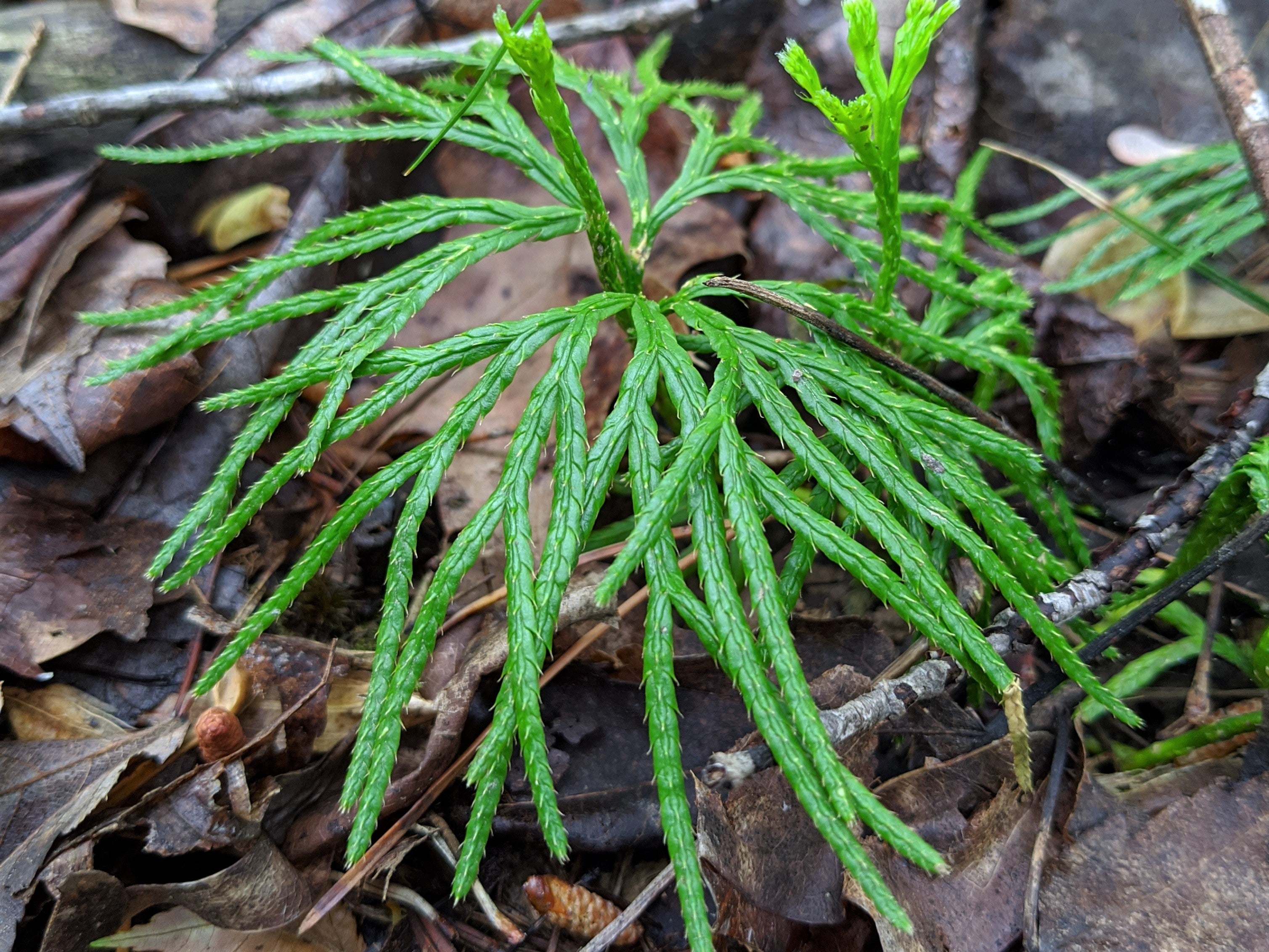 Lycopodium, or club moss, grows in great carpets along the beginning section of the trail.
Lycopodium, or club moss, grows in great carpets along the beginning section of the trail.
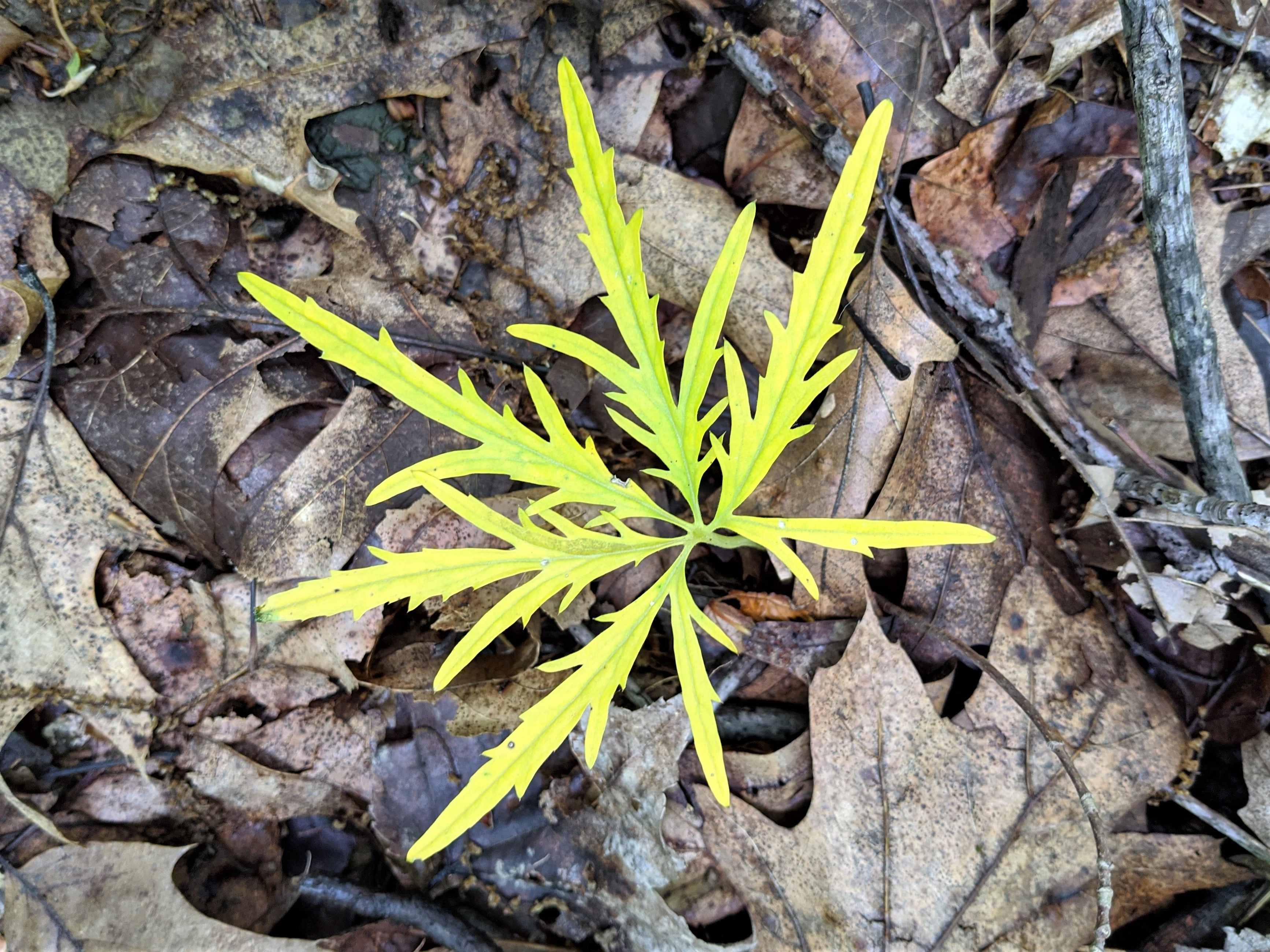 The distinctive leaves of cutleaf toothwort continue to draw the eye long after the flowers have faded away.
The distinctive leaves of cutleaf toothwort continue to draw the eye long after the flowers have faded away.
Scarlet Oak Woods is almost twice the size of Dilcher-Turner Canyon Forest, according to Sycamore Land Trust. but it has a less extensive trail system. If you really wanted to, you could walk the trails and be done in under an hour. But what we love about this one is that a short trail goes down to a wide ravine with a quiet brook where you can just relax and bathe in the sounds and smells of the forest. The creek cuts through sandstone, shale, and limestone, so if you love picking through interesting rocks, you can sit in the shade listening to the wood thrushes sing above you and poke through the pebbles to your heart's content.
We are definitely not seasoned herpers, but we're always on the lookout for snakes, turtles, and salamanders. Especially salamanders, since we've seen so few in all our years of hiking. This time we got really lucky. As we walked along the drier parts of the creek bed, we gently investigated fallen limbs and logs. Under one log we discovered a gorgeously patterned long-tailed salamander. After admiring it for a few minutes, we left it in peace to do its squirmy salamander thing.
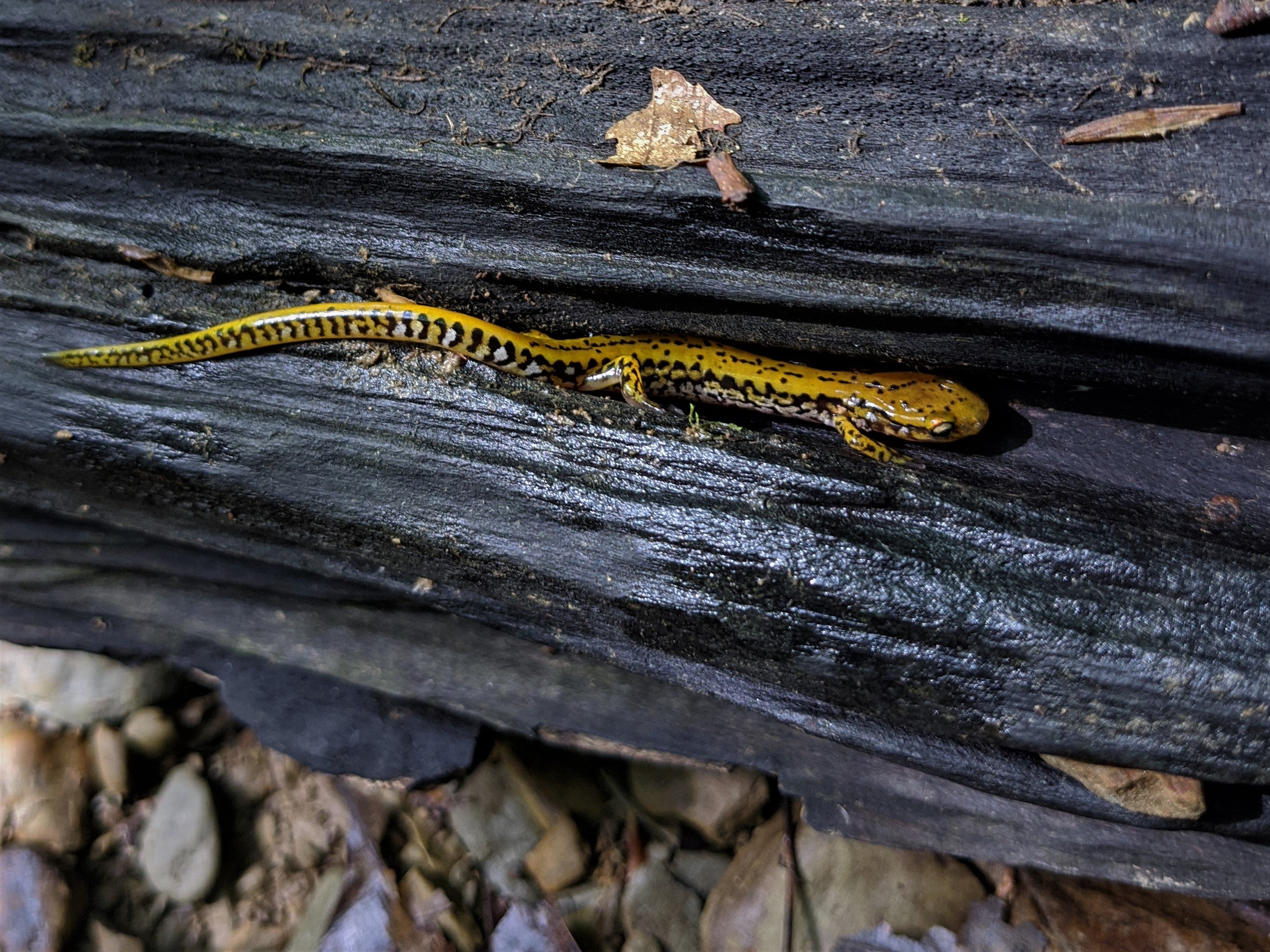 The long-tailed salamander lives in caves and can be often spotted in wooded environments after a good rain.
The long-tailed salamander lives in caves and can be often spotted in wooded environments after a good rain.
In both preserves, we did come across an amphibian that even beginner herpers would be familiar with: the american toad. They're easy to overlook when in the leaf litter, but if you take the time to look close, you can see that what seem like drab critters are often very colorful, with their mix of earth tones and small spots of orange and rust.
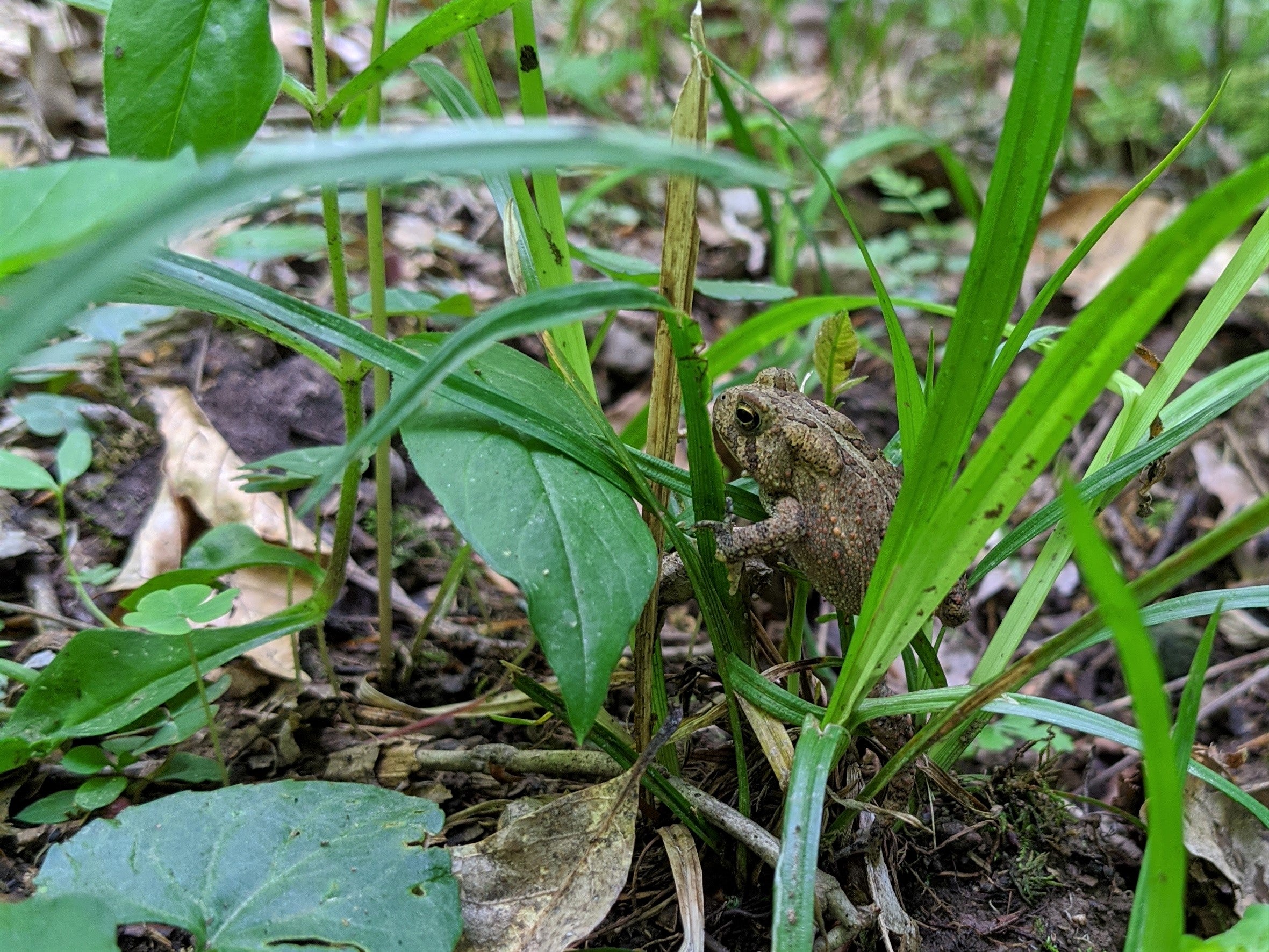 We were entertained by the way the way this little guy perched in this tuft of grass.
We were entertained by the way the way this little guy perched in this tuft of grass.
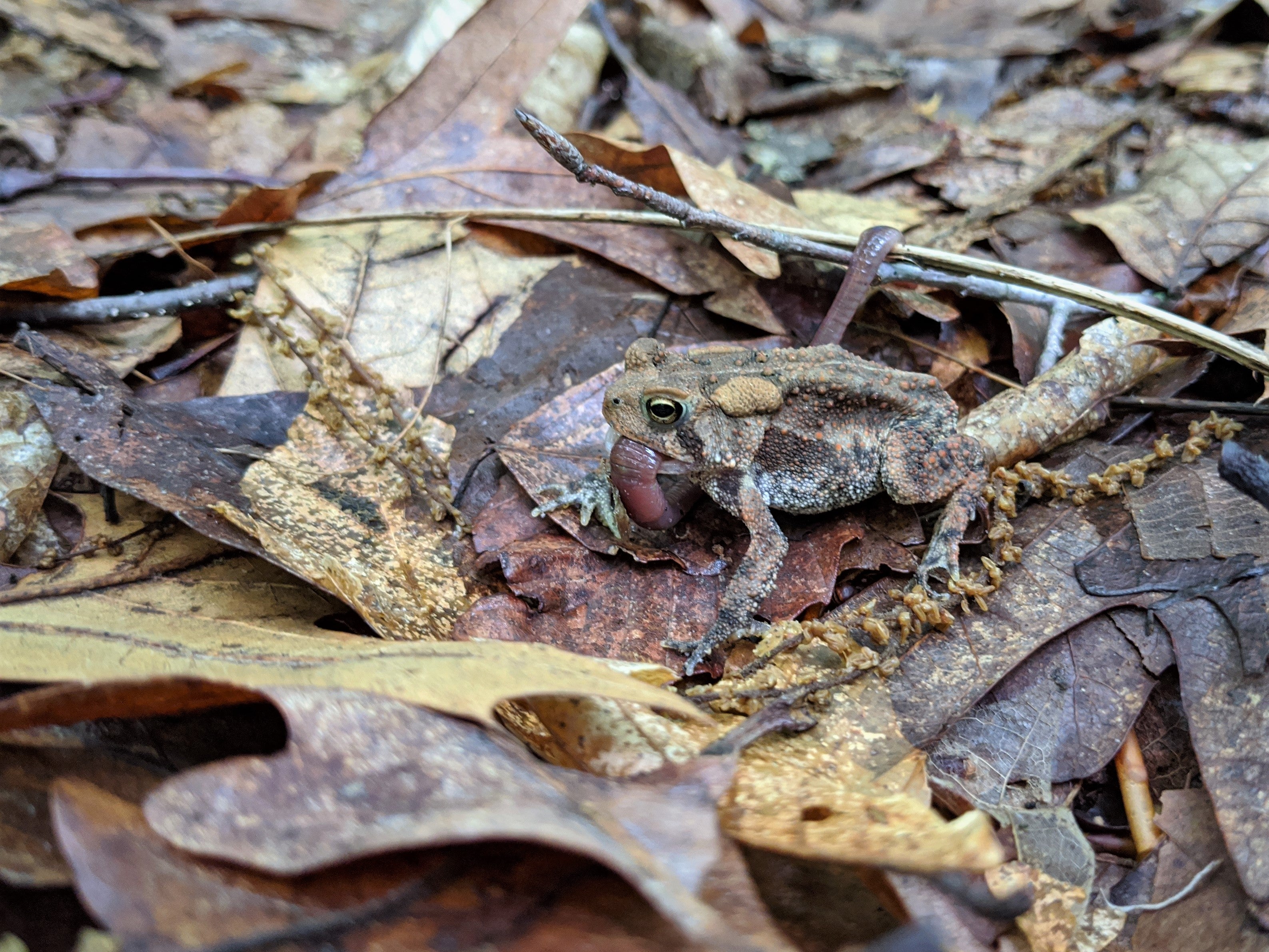 This toad was hopping along with a freshly caught meal.
This toad was hopping along with a freshly caught meal.
Urban wildlife viewing in our local parks, neighborhood, and our yard is always a pleasure, but it was really refreshing to get out to these more rural sites, where the only sounds we could hear were the songs of birds and insects, water over stone, and wind through the trees.

